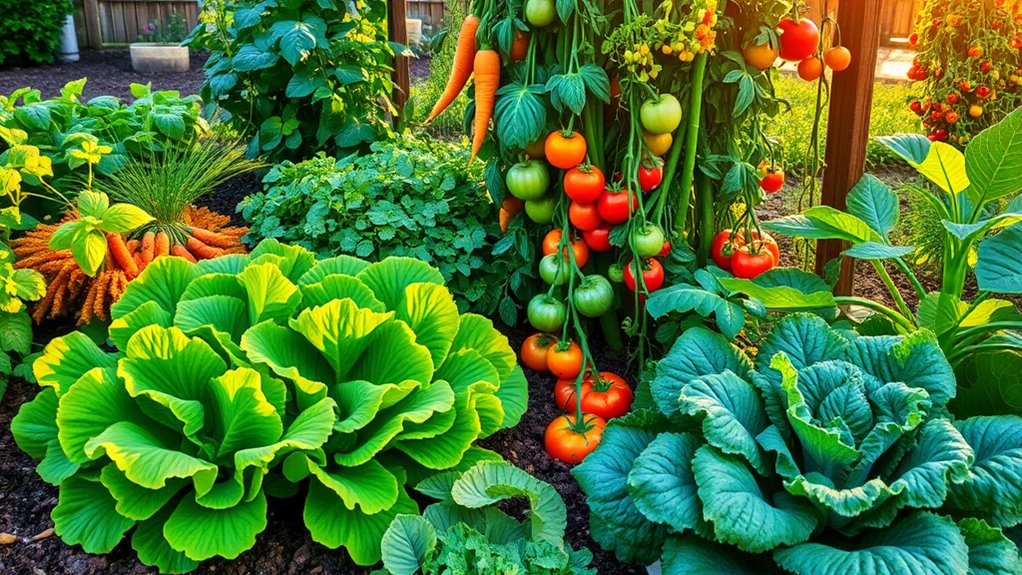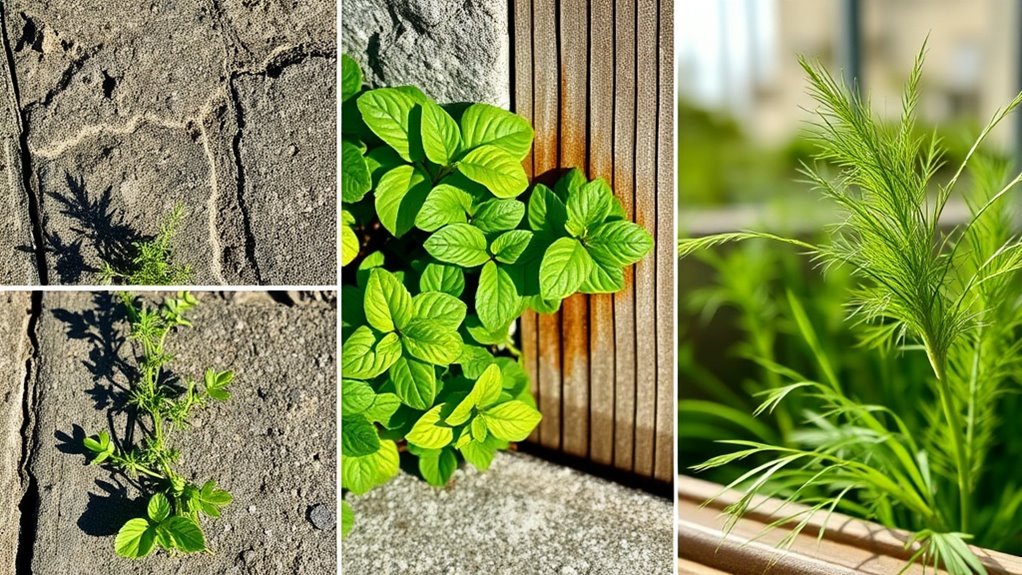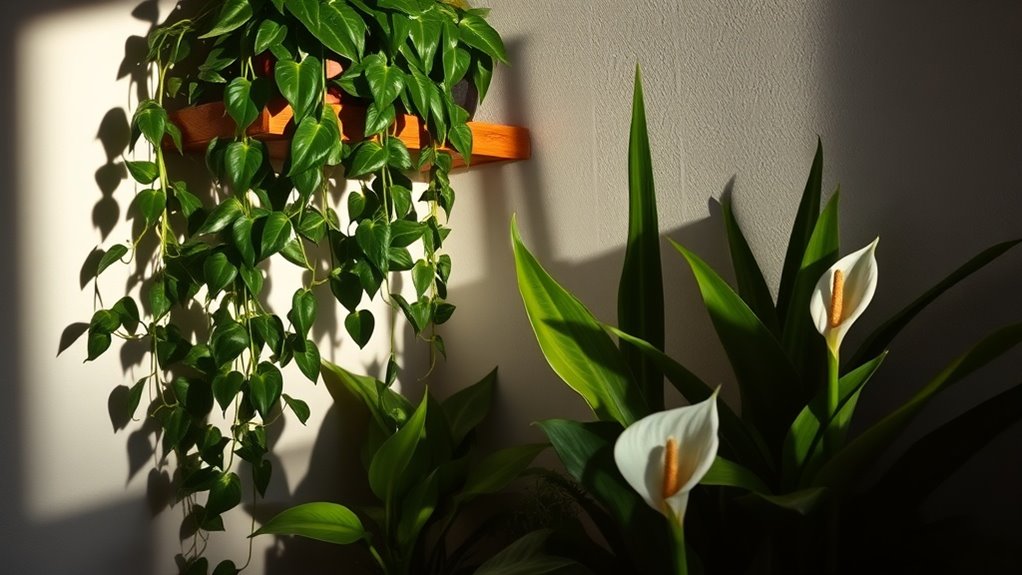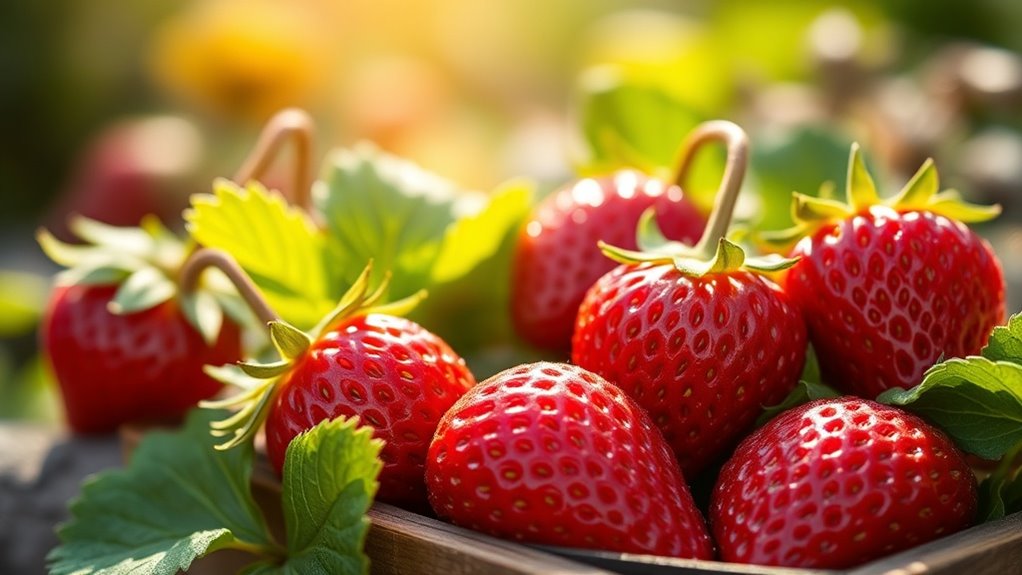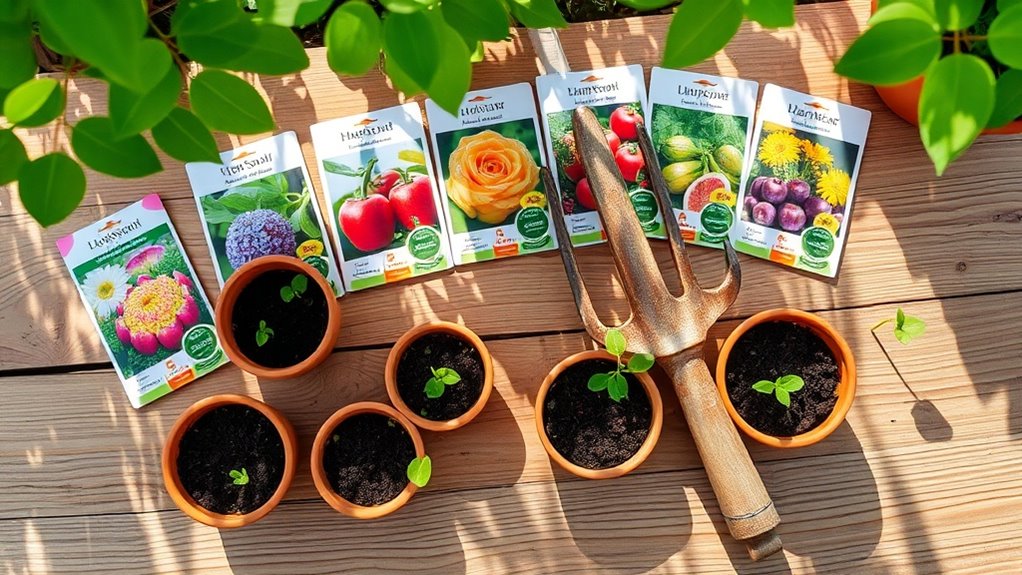What I Plant Each Season for a Constant Harvest
When planning your garden for a consistent harvest, start with spring planting strategies. You’ll want to choose cool-season crops like peas and lettuce, which thrive in the brisk temperatures. As the heat rises, shifting to tender plants like tomatoes and peppers ensures your garden adapts. But the seasonal shifts don’t stop there. Knowing what to grow in summer can set the stage for a bountiful fall and a surprising winter harvest.
Spring Planting Strategies
Spring is the perfect time to kick-start your garden, and adopting effective planting strategies can make all the difference.
Focus on planting by season; select cool-season crops like peas, lettuce, and radishes first. These thrive in lower temperatures.
Then, as the ground warms, transition to tender vegetables like tomatoes and peppers. This staggered approach ensures a bountiful, continuous harvest throughout the growing season. Additionally, consider incorporating ideal crops that are known for thriving in spring to enhance your garden’s productivity.
Summer Crop Selections
As the days grow longer and the temperatures rise, you’ll want to shift your focus to summer crop selections that thrive in the warmth.
Consider planting tomatoes, peppers, and zucchini, as they flourish in sunny conditions. Don’t forget about cucumbers and squash, which provide a bountiful yield. With proper care, these crops can ensure a vibrant summer harvest for your garden. Additionally, bell peppers thrive in warm weather and are a great addition to any summer garden.
Fall Garden Favorites
While summer crops may fade, autumn brings a unique opportunity to cultivate a variety of flavorful and nutritious plants that thrive in cooler temperatures. Consider incorporating these fall favorites into your garden for a bountiful harvest. Fall gardening can be particularly rewarding as you can produce seasonal vegetables that will not only grow better in the cool weather but also contribute to a sustainable garden.
| Plant | Ideal Planting Time | Days to Maturity |
|---|---|---|
| Kale | Late August to Sept | 55-75 days |
| Spinach | Late August to Sept | 30-45 days |
| Carrots | Late July to Aug | 70-80 days |
| Broccoli | Early July to Aug | 70-100 days |
Winter Planting Options
Although winter may seem like a quiet time in the garden, there are plenty of planting options that can provide fresh produce even in the colder months. Consider sowing garlic, overwintering onions, or planting hardy greens like kale and spinach. Using row covers can protect your crops from frost, allowing you to enjoy fresh vegetables throughout winter while preparing for spring’s resurgence. Additionally, growing fresh herbs in low-light conditions can enhance your winter gardening experience.
Companion Planting Techniques
Winter’s quiet may lull you into thinking the gardening season is over, but it’s the perfect time to plan your spring garden, especially when it comes to companion planting techniques. Pairing plants can boost growth and deter pests. Check out some effective combinations in the table below:
| Companion Plant | Benefits |
|---|---|
| Tomatoes | Deter aphids |
| Basil | Enhances flavor |
| Marigolds | Attract beneficial insects |
Incorporating companion planting in your garden can lead to healthier plants and increased yields.
Crop Rotation for Year-Round Harvests
To ensure a bountiful garden throughout the year, embracing crop rotation is essential.
Start with planting cool-season crops like lettuce or peas in spring. As summer approaches, switch to warm-season varieties such as tomatoes and peppers.
In fall, consider root vegetables like carrots and beets. This practice enhances soil health, reduces pest buildup, and maximizes yields, giving you consistent harvests all year long.

